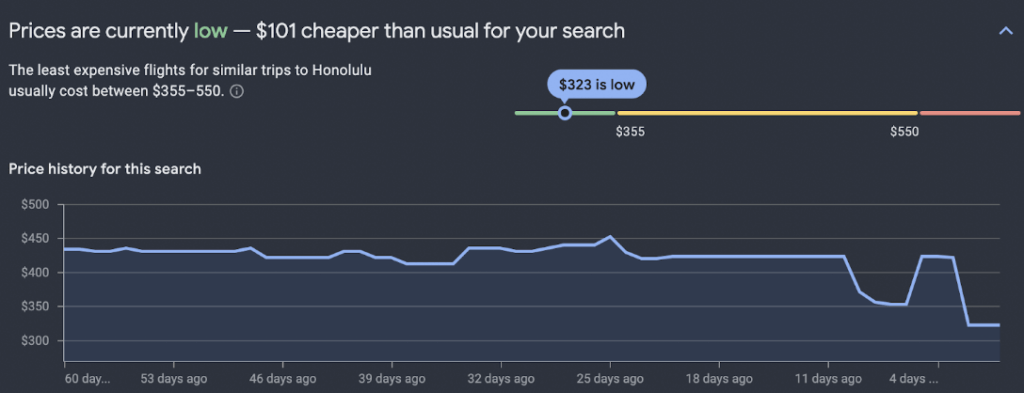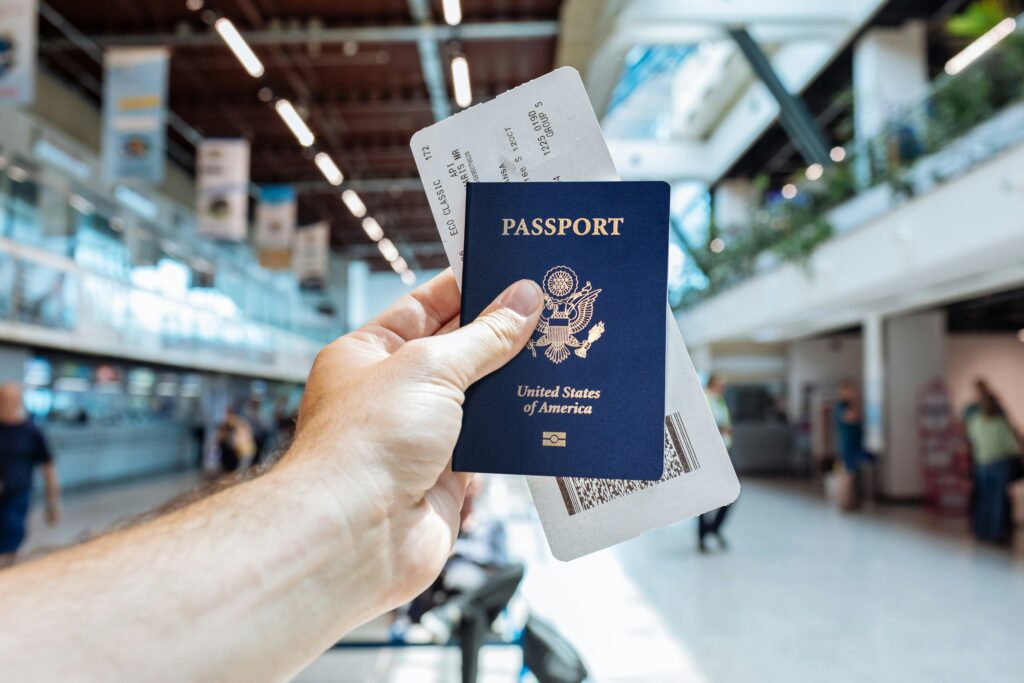Want to save big on flights? Flexibility is your secret weapon. Adjusting your travel dates, using smart tools, and exploring off-peak seasons can cut costs by hundreds of dollars. Here’s a quick rundown of the best strategies:
- Use flight search engine calendars to compare prices across dates and months. Tools like Google Flights and Kayak help you spot the cheapest days to fly.
- Fly midweek (Tuesdays or Wednesdays) instead of weekends to save up to $100 per ticket.
- Travel during shoulder seasons (spring and fall) for lower fares and fewer crowds.
- Set up price alerts with tools like Dollar Flight Club to track fare drops and grab deals quickly.
- Book multi-city or open-jaw flights to explore more destinations while saving money.
- Time your booking: Domestic flights are cheapest 1–3 months in advance, while international flights are best booked 3–5 months ahead.
- Use a VPN to find regional pricing discounts, often 10–40% cheaper in countries like India or Mexico.
1. Use Flight Search Engine Date Calendars
If you’re looking to save money on flights, pairing flexible travel dates with flight search engine calendars can be a game-changer. These tools allow you to view prices across days, weeks, or even months, making it easier to spot the cheapest fares. Not only does this simplify the planning process, but it can also lead to substantial savings.
Cost Savings Potential
The savings from using date calendars can be impressive. Take Alex Cornici’s experience as an example: in May 2025, he used Google Flights’ flexible date search for a last-minute trip to Tokyo. By shifting his departure by just two days and opting for a different airport, he managed to save over $200. Even small changes in your travel dates can lead to significant cost reductions.
For instance, flights departing midweek are often priced much lower than those leaving on weekends. This insight can help you make smarter decisions about when to travel.
Ease of Implementation
Most major flight search engines make it easy to spot deals with their color-coded calendars. Typically, green indicates the lowest fares, while red highlights the most expensive options.
Perfect for Flexible Schedules
These calendars are particularly useful if your travel dates aren’t set in stone. Many budget-conscious travelers plan their trips around the cheapest dates revealed by these tools, instead of locking in fixed dates upfront. If you’re considering a week-long vacation, you can scroll through several months to find the most affordable consecutive days. You can even adjust your trip length to see how it affects the price – sometimes a six-day trip costs less than seven days, or extending your stay by a day might lower your return fare.
Tools and Platforms to Explore
To get the best deals, take advantage of the calendar tools offered by platforms like Google Flights, Kayak, and Skyscanner. Each has unique features:
- Google Flights provides calendar views, date grids, and price graphs to help you track fare trends.
- Kayak makes spotting cheap dates straightforward with its intuitive calendar interface.
- Skyscanner offers both calendar and bar graph views to compare prices.
It’s worth checking multiple platforms, as fares can vary. If you’re flexible with your timing but have a specific destination in mind, browse through several months. Airlines often follow seasonal pricing trends, so a route that’s expensive this month might be much cheaper next month.

2. Choose Mid-Week Departures and Returns
If you’re looking to trim your flight expenses, one of the easiest tricks is to skip the weekend rush. Flying out on a Tuesday or Wednesday often comes with lower ticket prices, while flights on Fridays and Saturdays tend to cost more. Why? Business travelers typically fly out on Sundays and return on Fridays, while leisure travelers pack the weekend flights. By opting for midweek travel, you dodge the crowds and save money.
How Much Can You Save?
Flying midweek can lead to some solid savings. On average, domestic travelers save about $56 per ticket throughout the year. During busy seasons like spring break and summer, those savings can climb to over $60 per ticket – and even hit $100 or more around major holidays. Why It’s Easy to Do
Making this switch is simple. Tuesdays and Wednesdays see fewer travelers, which means less demand and lower prices. Meanwhile, Sundays and Fridays consistently see price spikes due to heavy traffic.
Perfect for Flexible Travel Plans
If you have some wiggle room in your schedule, midweek travel works like a charm. Even shifting your trip by just one day can make a noticeable difference in your airfare. For example, Hopper reports that flying to Europe on a Wednesday can save you around 10% compared to the priciest option: Friday departures. Tools like Google Flights, Kayak, Skyscanner, and Momondo make it easy to spot these midweek deals by showing fare differences across various days.
3. Travel During Shoulder Season
Shoulder season, the sweet spot between peak and off-peak travel times, offers a trifecta of perks: lower prices, smaller crowds, and comfortable weather conditions.
The timing of shoulder season depends on your destination. For many European locations, it typically falls during the spring and fall. However, tropical destinations may have their own unique windows. These off-peak perks can lead to substantial savings, as outlined below.
Cost Savings Potential
Traveling during shoulder season can significantly reduce your expenses. For instance, flights during Christmas week in 2024 are 57% pricier compared to the last week of August. Flights from the U.S. to Europe are often about 15% cheaper during this period, with some routes offering discounts of up to 25%. In fact, you might snag round-trip flights to Europe for under $400, while domestic U.S. flights can drop to as low as $250. Fall travel, in particular, tends to see airfare drop by around 30% compared to the summer months.
This makes shoulder season an excellent choice for budget-conscious travelers.
Compatibility with Flexible Dates
If you have flexibility in your travel dates, shoulder season becomes an even better deal. Combining off-peak periods with midweek departures often leads to the best savings. With lower demand during these times, prices are more competitive. Using tools that show airfare trends across an entire month makes it easier to pinpoint the ideal dates for your trip.
Tools to Find the Best Deals
Take advantage of resources like Kayak’s AI-powered “Best Time to Travel” feature, which helps you identify the most affordable shoulder season dates. Simply enter your departure airport, destination, and trip length to uncover low-airfare periods. Google Flights also offers a month-view option to track prices, and fare alerts from Dollar Flight Club ensure you never miss out on a great deal. These tools make it easier than ever to plan a budget-friendly trip during shoulder season.

4. Set Up Price Tracking Tools
Keeping an eye on fare trends is key when you’re trying to snag the lowest prices, especially with flexible travel dates. Price tracking tools do the heavy lifting, monitoring fluctuations and notifying you when fares drop. These tools analyze market trends, seasonal shifts, and demand changes, helping you time your bookings perfectly. Here’s how to set them up and make the most of them.
Quick and Simple Setup
Getting started with a price tracker is a breeze. All you need are the basics: your departure and arrival airports, your travel dates (or a flexible date range), and an email address for notifications. In less than five minutes, you can have everything set up and start receiving alerts almost immediately.
And don’t forget – once you’ve booked your flight, turn off the alerts to avoid unnecessary notifications.
Perfect for Flexible Travel Plans
Price trackers are especially helpful if your travel dates are flexible. Many platforms let you set alerts for an entire month instead of specific days, making it easier to spot the cheapest travel windows.
For even better results, set up alerts for multiple date combinations or nearby airports. This approach increases your chances of finding great deals.
Save Big on Flights
The savings from using price trackers can be impressive. On average, travelers save about $50 on domestic flights and $150 on international tickets. Those who actively monitor fares can see discounts of up to 20%. Flight prices are notoriously unpredictable, often changing as many as 50 times between their initial listing and the departure date. Recent data backs up the value of tracking: U.S. airfares in March 2025 were 5.2% lower than in March 2024 and 12.1% lower than in March 2015.
Tools That Make Tracking Easy
Dollar Flight Club stands out as a reliable and user-friendly option for setting up price alerts. Their platform offers real-time notifications for fare trends, exclusive deals, and even error fares that might not show up on traditional search engines. By customizing alerts based on your travel preferences, you can maximize your chances of landing the best deals for flexible travel dates.
5. Book Multi-City and Open-Jaw Itineraries
If you’re flexible with your travel dates, multi-city and open-jaw itineraries can help you save big while giving you the chance to explore more destinations. Instead of sticking to a traditional round-trip ticket, consider flying into one city and out of another. This approach not only stretches your travel budget but also opens up opportunities for richer experiences.
Cost Savings Potential
Multi-city and open-jaw flights can often be cheaper than booking separate one-way tickets – sometimes slashing costs by as much as 90%. Another perk? Open-jaw flights can save you from spending extra on ground transportation like trains, buses, or rental cars to get back to your original airport.
Compatibility with Flexible Dates
Flexibility is key when booking these itineraries. It allows you to adjust each leg of your trip independently, which can lead to even better deals. These flights use the same fare rules as regular tickets, so tweaking your departure or return dates could unlock even lower prices. Plus, being open to flying into or out of smaller or regional airports can sometimes uncover hidden gems in terms of savings.
Ease of Booking
Booking multi-city itineraries is straightforward. Most flight search engines include a “multi-city” option where you can input multiple airport codes to piece together your ideal trip. Using broader city codes can also reveal nearby airports with cheaper fares. And don’t forget to experiment with the order of your travel (e.g., London to Paris vs. Paris to London), as pricing can vary depending on the route.
Tools to Simplify the Process
Several platforms make finding these deals a breeze. KAYAK’s multi-city search pulls results from over 1,200 sources, while Skyscanner offers excellent global coverage. Kiwi is another great tool, known for combining fares from different airlines (though it might mean longer layovers). For example, in one comparison, Google Flights priced a multi-city route at $1,097, while Kiwi found the same trip for $886.
If you’re looking for alerts on these deals, services like Dollar Flight Club can also be a helpful resource.

6. Time Your Booking Window
If you’re flexible with your travel dates, timing your bookings can make a huge difference in cost. While there’s no foolproof way to always snag the lowest price, understanding how booking windows and price trends work can help you land better deals.
How Timing Impacts Costs
Booking at the right time can lead to significant savings. For domestic flights, purchasing tickets one to three months before departure can save you around 25% compared to last-minute bookings. International flights, on the other hand, are generally cheapest when booked three to five months in advance.
The day you book also matters. Sundays are the sweet spot for savings, with domestic travelers saving about 6% and international travelers saving up to 17% compared to booking on Mondays or Fridays. Departure days play a role too. Flying domestically on a Saturday is about 17% cheaper than flying on a Sunday. For even more savings, consider flying on a Tuesday or Friday, which can cut costs by 12% compared to peak Sunday prices.
Easy Steps to Save
For domestic flights within the U.S., the best deals are often found 38 days before departure, with the lowest fares typically appearing between 21 and 52 days out.
Even if you’re not ready to commit, start monitoring prices early. This gives you a baseline to recognize a great deal when it pops up.
Flexibility Makes a Difference
Having flexible travel dates takes these timing strategies to the next level. For example, delaying a summer trip from early July to late August can save nearly 30%. Flexibility also allows you to take advantage of off-peak travel periods, like shoulder seasons, when prices are naturally lower.
Keep in mind that airfare tends to spike about three weeks before departure, so booking early is usually the safer bet. If you’re flexible, you can adjust your plans to snag a better deal or avoid high-priced periods. Flying during the early- to midweek (Tuesday or Wednesday) can save you 13% to 20% compared to weekend flights.
Tools to Help You Time It Right
There are plenty of tools available to help you master the art of booking at the right time. Start by setting up price alerts on flight search engines. These alerts track fare changes and help you spot patterns – like how prices tend to dip earlier in the week and climb as the weekend approaches.
For an extra edge, services like Dollar Flight Club send notifications when fares drop significantly, so you don’t have to constantly check yourself. Pairing these tools with flexible travel dates ensures you’re always prepared to grab the best deal when it appears.
7. Use VPNs for Regional Pricing
Did you know you can tweak your virtual location to score better flight deals? Airlines often adjust fares based on where you’re searching from, thanks to dynamic pricing algorithms. By using a VPN (Virtual Private Network), you can bypass these location-based pricing strategies and potentially save a lot – especially if you’re flexible with your travel dates.
How Much Can You Save?
The savings can be impressive, particularly for international flights. In March 2025, tests showed regional pricing differences that were hard to ignore. For example, a Sydney–Bangkok flight cost $388 when searched from a U.S. server but dropped to $324.79 when using a Mexican server – a difference of over $60. Even more striking, a São Paulo–Santiago flight went from $1,912 on a U.S. server to just $110 when booked through a Thailand server, saving more than $1,800.
Economy tickets from countries like Turkey, Mexico, and India are often 10–40% cheaper. Premium cabin seats can also see discounts of 5–20% when booked from these regions. That said, not everyone who uses a VPN sees consistent savings – less than 10% of users report significant discounts.
How to Get Started
To try this out, start by clearing your browser cookies and connecting to a VPN server in a different country. This ensures that airlines and booking platforms don’t use your previous search data to influence prices.
VPN services like NordVPN, Surfshark, and Proton VPN are excellent choices for this purpose. They offer fast connections and extensive server networks, making it easy to switch locations while searching for flights. Begin with servers in Mexico, India, Thailand, or Turkey and compare prices. Experiment with different options to find the best deal.
Pairing VPNs with Flexible Dates
VPNs work even better when combined with flexible travel dates. Mid-week departures, for example, are often cheaper than weekend flights. By adjusting both your travel dates and your virtual location, you can maximize savings.
Imagine this: a Tuesday departure using a Mexican server might cost less than a Saturday departure from the same server. By testing different combinations of dates and VPN server locations, you can uncover the best deals with minimal effort.
Tools That Make It Easy
VPN providers like NordVPN, Surfshark, and Proton VPN are well-suited for flight searches. NordVPN stands out for its wide server coverage and fast speeds, earning a 4.9/5 rating for booking purposes. Surfshark offers budget-friendly pricing and extensive server access, while Proton VPN has a free tier that limits access to five countries but still gets the job done for basic searches.
When using a VPN, focus on servers in regions known for lower fares. Testing consistently shows that countries like Mexico, India, Thailand, and Turkey are hotspots for savings. Their lower purchasing power compared to the U.S. often results in more affordable ticket prices.

Conclusion
Finding cheaper flights with flexible dates comes down to smart planning and using the right strategies. Simply shifting your travel dates can lead to savings that range from hundreds to even thousands of dollars.
Flexibility is key when it comes to cutting airfare costs. Adjusting your departure dates, choosing shoulder seasons instead of peak travel times, or even using a VPN to explore regional pricing can make a big difference. For example, flying around Thanksgiving could cost $618 if you leave on November 23rd, but just $333 if you travel a few days earlier. Similarly, a flight from New York to Greece in September might be $435, compared to $906 during the high season. These savings could go toward upgrading your accommodations or adding extra activities to your trip.
To make finding these deals easier, services like Dollar Flight Club offer personalized email and SMS alerts for discounted flights. With over 3 million members, they’ve helped travelers save up to $500 on flights. One member, Dinon H., snagged a Boston-to-Oahu flight for under $500 thanks to these alerts.
Another tip? Stay open-minded. Instead of sticking to rigid dates or destinations, consider booking whenever a great deal pops up. Tools that track prices and knowing the best times to book – 28–90 days in advance for domestic flights and 60–240 days for international ones – can also help you stretch your travel budget even further.
The bottom line? Flexibility pays off. By applying these strategies, you can turn your travel plans into a cost-effective adventure without sacrificing the experience.
FAQs
How can I use a VPN to find cheaper flights, and which countries should I choose?
Using a VPN can be a smart way to score cheaper flights by allowing you to change your virtual location. Airlines and travel sites often adjust ticket prices based on where you’re browsing from, and people in wealthier countries, like the United States, may end up seeing higher fares. By connecting to a VPN server in a country with a lower cost of living – such as Mexico, India, or Turkey – you might find flights that are up to 40% cheaper.
Here’s how to make it work: start by selecting a trustworthy VPN provider. Once you’re set up, connect to a server in one of these countries. Then, clear your browser cookies or switch to incognito mode. This step is crucial because it prevents websites from using your previous searches to inflate prices. By following these simple steps, you can sidestep price discrimination and potentially save a significant amount on your next adventure!
What is shoulder season, and how can it help you save on flights?
Shoulder season refers to the period between a destination’s busiest travel times and its off-season, often falling in spring or fall. During this window, demand for flights and accommodations tends to drop, which usually means lower airfare and hotel prices.
For instance, flights during shoulder season can be dramatically cheaper – sometimes slashing costs by as much as 50% compared to peak travel times. But it’s not just about saving money. Shoulder season often brings milder weather and fewer tourists, creating a more laid-back and wallet-friendly travel experience.
What are multi-city and open-jaw flights, and why are they a smart choice for travelers?
Multi-city and open-jaw flights are excellent choices for travelers aiming to stretch their budget and enjoy greater flexibility. A multi-city flight lets you visit several destinations within one itinerary – usually for less than booking separate one-way tickets. For instance, instead of a standard round-trip flight to a single city, you could plan a route that takes you through London, Rome, and Athens, all without retracing your steps.
An open-jaw flight, on the other hand, allows you to fly into one city and depart from another. This setup is perfect when a traditional round-trip ticket doesn’t fit your travel plans. It eliminates unnecessary backtracking, saves money, and gives you the freedom to explore more places in a single trip. Both options make it easy to craft a trip that’s tailored to your interests while keeping costs manageable.










